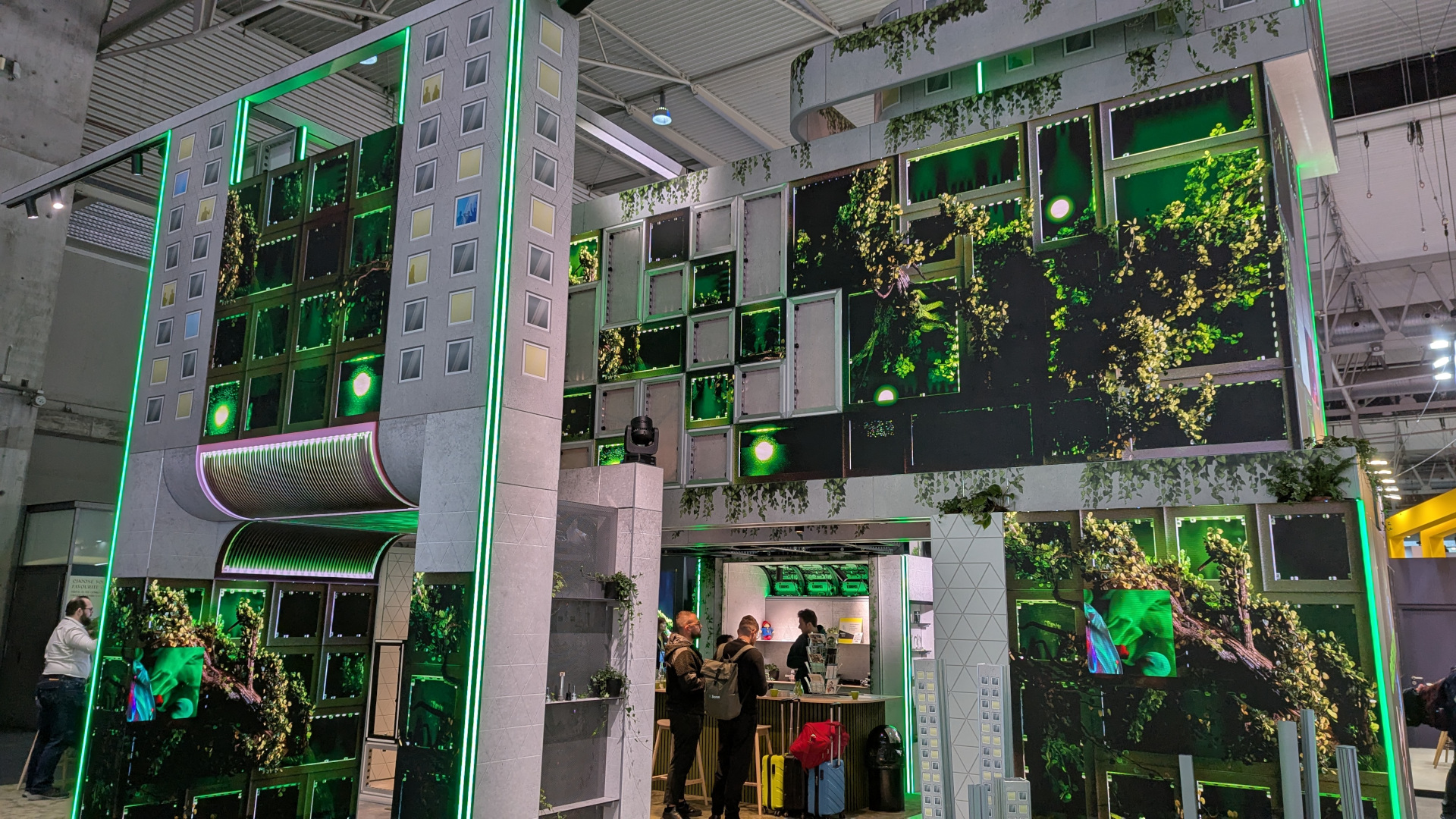Talking about sustainability is out – or maybe not? The shift in the discourse and the EU's simplification package could help to move from pure reporting to a solution-oriented approach.

Green Signage: Less Reporting, More Vision
Things move fast these days. It was only two years ago that exhibitors at ISE were outdoing each other in claiming to offer the most sustainable solution. This February, the topic Green Siganage was barely visible. If it hadn’t been for the buzz surrounding the wider launch of e-paper solutions, whose products were on display at 16 stands, sustainability would have gone rather unnoticed at the show. Green Signage was not as visible as before although companies talked intensively about energy saving potential, but without always waving the green flag. Resilience and efficiency gains were put forward in many discussions instead.
Some people argue that the lack of visibility for sustainability is natural. Every year there is something new to show, and now it is time to make room for other trends, such as AI. Others say that sustainability has received too much attention in recent years, so it is understandable that interest in the topic should decline.
Less reporting duty
Politicians have also stirred the sustainability bowl in recent weeks. The EU in Brussels announced at the end of February that it would be introducing a “simplification package” in response to criticism of the reporting burden for sustainability. The current reporting directive has been very demanding to comply with, both in terms of time and costs for external consultants, in-house sustainability specialists and additional audit procedures.
The revision proposed at the end of February is intended to “protect SMEs from excessive sustainability reporting”, according to the Commission. However, it will not lead to the removal of reporting requirements for small and medium-sized enterprises, as is the case for many companies in our industry. Although fewer companies will have to report directly on sustainability, this is only half the truth.
About the Author
Daniel Oelker is the Green Signage expert of invidis. The invidis impact partner and former Zetadisplay CCO analyses the industry regarding its sustainability impact and writes regularly about the advancements on invidis.com.
The other half is that many companies will still be required to publish carbon footprint improvement data sets as part of the value chain of larger customers. The imbalance between the smaller digital signage supplier and the consolidated larger customer base will require a comprehensive set of sustainability data even in the slimmed down omnibus set-up.
Industry customers – over 1,000 employees and €50 million turnover – will still need to report and will need to include the supplier base in their reporting as part of Scope 3 reporting, analysing improvements in the value chain. So if you are a small or medium-sized digital signage company: Your own reporting requirements may disappear, but your customer base will still force you to assess critical sustainability data to a similar extent as before.
Into action
I think the focus on sustainability in recent years has been too much on reporting. Many companies have struggled with bureaucratic requirements and have waited to proactively embrace sustainability and neglected to focus on the business benefits, which I would have preferred.
So, the message from Brussels about less bureaucracy is a good sign. It coincides with the industry’s need to develop sustainable approaches beyond reporting that add value and are innovative.
Second life for displays
I can think of two examples of promising developments in our industry. One is, of course, e-paper, which was the talk of the town in Barcelona. It shows that continuous development with an extreme focus on energy saving can be translated into a promising product range, from small size to large outdoor applications. Done right, it could change the way the industry looks at display quality. Perhaps ‘good enough’ will be the new mantra when discussing display parameters, as the upside in terms of energy savings is enormous.
The other development I have in mind was unveiled by Sharp at ISE. It was a joint approach between leasing specialist CHG Meridian and Sharp Europe to promote a second life for hardware. As we can already see with smartphones or tablets, a residual value at the end of the contract period allows for a longer life in a secondary market. Digital signage displays are often far from the end of their useful life at the end of the contract period. Creating a new market for ‘pre-loved’ products opens also the possibility for a new customer base in addition to the environmental benefits.
More discussion please
I think it is fair to say that public interest in sustainability in our industry has peaked for the time being. However, even if it is not currently “the talk of the town”, the industry still needs to integrate sustainability data into both product development and relationships along the value chain.
If, as an industry, we can get serious about this, we will take another step forward in our role as a relevant, business-critical partner to various industries and authorities. A good arena to discuss how to do this proactively will be the upcoming Digital Signage Summit in Munich in May. You are welcome to join the discussion there!

